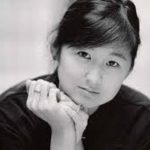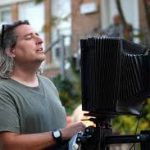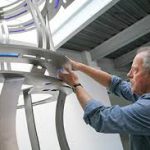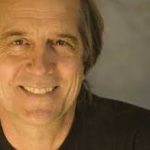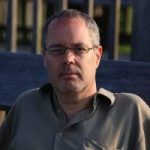MAKING: THEN AND NOW
July through November, 2017
Work by Maya Lin, Gregory Crewdson, Don Gummer, Stephen Hannock, Jenny Holzer, and David Teeple
Contemporary artists respond to the world around them – to the northeastern landscape that they call home or to the political landscape that it seems we cannot escape from today. They respond to the earth – a bend in the river, iron ore from its depths, its color and contrasts. They respond to the feelings that we have as humans – momentary isolation or inequality in some shape or form.
The Shakers responded to their landscape as well – they created villages within it that utilized the natural resources that surrounded them. Forests and streams were part of their world. They harnessed the streams to create green energy to run their machines, they hewed the trees from their forests to build monumental architecture. They lived isolated lives, separate from the outside world where they practiced equality for all in order to create a “heaven on earth.”
This exhibition explored the connection between artists today and an historic utopian movement in the Berkshires, a place both have called home.
Specifics on pieces:
Gregory Crewdson’s work explored isolation, with an interior photograph from a Berkshire county industrial building that closed like so many others. Beautiful and unique, this one of a kind 8 x10 black and white Polaroid has never been exhibited, and is part of the artist’s personal collection. The image depicts one of the artist’s Beneath the Roses sets, shot on the sound stage at MassMOCA in North Adams and truly captures the architecture of the Berkshires.
Stephen Hannock exhibited The Great Falls at Dawn for Xu Bing (2013). The work is 12 feet long, in polished mixed media on canvas and offers the viewer a vista with text and collage. It is a celebration of what Hannock believes to be the two most dynamic works of industrial art in North America at the time: Xu Bing’s “Phoenix”, which was on view in 2013 at the Massachusetts Museum of Contemporary Art in North Adams, and Niagara Falls. Other stories alluded to in text woven throughout the painting involve the likes of Maya Lin, Mark Bradford and Chuck Close. Close’s “Adam and Eve” daguerreotype, hidden in the foreground rock formation was modeled for by the artist and his late wife Bridget Watkins Hannock.
David Teeple, based in Northampton, MA created a site-specific sculpture for this exhibition that incorporated aluminum beams and glass tanks filled with water. His piece responded to the Shakers’ use of water, paralleling aquaducts that run under the entire village. Teeple, a working artist since 1980, explores water through his art: the impact it has on our lives, on the environment, on the economy and in politics.
Jenny Holzer’s “truisms” and pieces from her survival series echo thoughts that many people may have and do not often express outwardly. She uses the medium of writing and the public’s reception of her words and ideas are vital to her work. At HSV, her marble benches and metal wall plaques offered comments on fear, crowd mentality and kindness.
Don Gummer’s sculptural wall reliefs juxtapose floor plans from different types of buildings to create a whole that commented on architecture in all of its forms. His Atelier Jianshu Over R.M. Schindler’s Packard Residence (2005) is a Chinese studio plan overlaid on the plan of a two-storied Schindler house. Schindler was an architect who was against ornament, and focused on “space architecture.” A more personal wall relief is Blue House Without Ghost (2004), where Gummer has laid out the most straightforward plan for his own nineteenth century guest house, proving to his wife that there is nowhere within it for ghosts to reside.
Maya Lin is an architect and sculptor, most notable for her design of the Vietnam Veterans Memorial in Washington, DC, completed in 1982. In recent years, Lin has turned towards more natural elements in her work. Her site-specific wave fields sculpt the natural landscape into a rolling sea of grass. Her “river pieces” crawl up walls and expand over floors to give the feeling that water is moving and alive. Glass pieces add to the sense that actual water droplets are reflecting light throughout the space.
About the Artists
GREGORY CREWDSON is a photographer and filmmaker. His photos are often elaborately staged scenes of surreal situations in American homes and neighborhoods. Series such as Beneath the Roses (2007) create cinematic images from apparently ordinary interiors. Crewdson has exhibited at venues such as the Guggenheim in New York and Bilbao, the National Gallery of Victoria in Australia, and the Museum of Contemporary Art in Tokyo, Japan. His haunting photographs are highly sought after, and have been acquired by museums including the Los Angeles County Museum of Art, CA, Museum of Modern Art, NY, and the Whitney Museum of American Art, NY.
DON GUMMER works in a variety of mediums, though his monumental pieces of swirling metal may be among his most recognized sculptures. His work has been exhibited extensively in museums and galleries, public venues, and through commissioned pieces in the US and abroad. Commissioned works include Primary Compass (2000) at Butler Institute of American Art in Youngstown, Ohio, and Southern Circle (2004) at the Meridian Street Plaza in Indianapolis, IN.
STEPHEN HANNOCK is a painter known for producing atmospheric landscape paintings that include elements of collage – pieces of text, photos and handwriting. Hannock is one of only a handful of contemporary artists selected for inclusion in the just released compendium, The Metropolitan Museum of Art, Masterpiece Paintings. His work is also included in the collections of the Metropolitan Museum of Art in New York, the Whitney Museum of American Art, the National Gallery of Art in Washington, the Museum of Fine Arts in Boston, and the Bodleian Library at the University of Oxford, UK. He has also won a Special Visual Effects Oscar for his depiction of heaven in the 1998 film “What Dreams May Come.”
JENNY HOLZER is an installation and conceptual artist, utilizing the medium of writing and the public’s reception of her words and ideas as part of a social and cultural experiment. Since the late 1970s, when her Truisms and Inflammatory Essays were first posted anonymously around New York City, Jenny Holzer’s work has spoken out about many topics, including violence, oppression, sexuality, feminism, war, and power. Her large-scale outdoor light projections in public locations use phrases that question contemporary issues. She was the first female artist chosen to represent the US at the Venice Biennale in 1990, for which she won Golden Lion Award for Best Pavilion. Her work has been exhibited worldwide in museums and public spaces.
MAYA LIN is an architect and sculptor, creator of the Vietnam Veterans Memorial in Washington, DC, completed in 1982. Born in Ohio, Lin studied architecture at Yale University and Harvard University, and took time off to work in the field during graduate school. Best known for her moving memorials, in recent years, Lin has emphasized sustainability in her art. She began to incorporate more natural elements into her work. Site-specific land art has produced pieces like her shaped fields that sculpt the natural landscape into a rolling sea of grass. Awarded the National Medal for the Arts in 2009, she was also honored in 2016 with the Presidential Medal of Freedom.
DAVID TEEPLE is a sculptor based in Northampton, MA. Teeple was educated at Hampshire College and the Philadelphia College of Art. Teeple’s art-making is formally centered around water – its fluid memory as it moves, divides and rejoins, the way people perceive its transparency and work to contain it. Teeple makes sculpture that holds water and installations that rest on the surface of the water. His work can be seen in public, private and corporate art commissions and collections throughout the US, France, New Zealand, Germany and Spain, among others.

